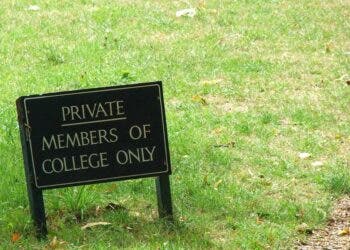New research is looking into how small groups of individuals interact to make decisions — particularly the ones regarding leadership.

Large groups of people tend to operate via a “wisdom of the crowd” mechanism, whereby individuals tend to aggregate information from the group. Overall, this does (generally) lead to crowds taking better decisions than the individuals themselves. For example, Sir Francis Galton remarked that when a crowd was asked to estimate the weight of an ox at a country fair, their averaged answers was closer to the ox’s butchered weight than most estimates taken individually.
Small groups don’t really follow this same principle, a new study reveals — at least not when it comes to leadership.
Ask the boss
Researchers at the New York University (NYU) Tandon School of Engineering worked with several groups of five volunteers, which they pitted through a 10-round cognitive test. Each participant was asked to estimate the number of dots displayed on a large screen and, without verbally communicating with one another, choose one of multiple answers using a custom-made clicker. The catch was that the image would only be shown for half a second at a time.
All 10 rounds were played consecutively in a single session. Because of how the test was designed, it was virtually impossible for participants to reliably count the dots — forcing them to guess, basically. However, they were given the chance to alter their answer in response to the choices of other participants.
Once all group members chose an answer, the screen displayed all current answers along with each member’s past performance (in selecting the correct number of dots). Participants then had a 10-second window in which to change their responses based on those of the others in the group.
“Individuals used social information more and more over time, and the more accurate the information, the more influence it had over participants’ choices,” said Porfiri. “Therefore, the relationship between participants’ performance and their social influence was reinforced over time, resulting in the emergence of group leaders.”
Individuals didn’t follow the simple majority rule, the team reports, as would be expected in a ‘crowd’. Instead, they were more fluid in who they followed, overall rallying behind the group members that had shown competence by performing best over time. Based on this observation, the team says that the group formed a dynamic network of interaction in which participants were nodes and the links were the consequences of social influence. For example, the investigators generated a link from one participant to another if the first had changed his or her answer to that of the second. The speed at which the network grew increased over the course of each of the rounds.
Participants were quite heavily influenced by social information when changing their answers. On average, they changed answers to ones that nobody else had selected only about 5% of the time — meaning that roughly 95% of changes mirrored those of other group members. Participants were more likely to be copied by others if their performances were good, even if their answers differed from those of the group majority.
Nakayama, the lead author, explained that the behavior of small groups is strikingly different from that of much larger gatherings of people.
“Where a large crowd would adopt a simple majority rule, with an increase in the accuracy of performance over repeated interactions, individuals rely more on social than personal information and as a consequence, good performers would emerge as group leaders, exerting a stronger influence on others over time,” says Shinnosuke Nakayama, postdoctoral researcher at NYU Tandon and lead author of the paper.
Such networks function much like neural networks in the brain, the team explains, where physically-distant neurons form connections to perform a specific function. Social ties in small groups evolve over time based on actions, they conclude.
The paper “Social information and spontaneous emergence of leaders in human groups” has been published in the Journal of The Royal Society Interface.






